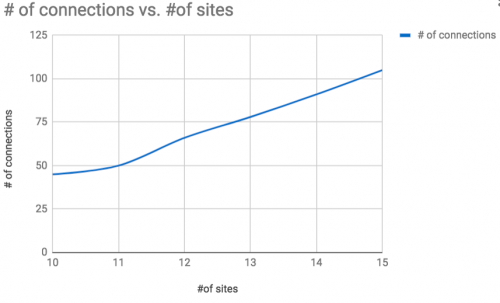Power laws and predicting the development of the web

Power laws are statistical laws that describe the relationship between two variables, where one variable (the dependent variable) is a function of the other (the independent variable). Power laws can be used to predict the development of the web in certain contexts, as they can provide insight into the underlying patterns and relationships that shape the web.
One example of a power law that has been used to predict the development of the web is the Zipf's law, which states that the frequency of a word in a language is inversely proportional to its rank in the frequency table. This law has been used to predict the growth of the web, as it suggests that a small number of high-frequency words (such as "the" and "and") will be used much more frequently than a large number of low-frequency words.
Another example of a power law that has been used to predict the development of the web is the Pareto principle, which states that a small number of causes (such as web pages or links) account for a large proportion of the effects (such as traffic or influence). This law has been used to predict the distribution of power and influence within the web, as it suggests that a small number of highly influential web pages or links will have a disproportionate impact on the overall structure and connectivity of the web.
While power laws can be useful for predicting the development of the web in certain contexts, it is important to note that they are only one tool among many, and that other factors may also influence the development of the web. In addition, power laws are statistical approximations, and they may not always hold true in all cases.
In summary, power laws can be useful for predicting the development of the web in certain contexts, but they are only one tool among many, and other factors may also influence the development of the web.
Related to web science (and this article in particular) we imagine for every new web site there is a rise in the total number of new connections. If I have 10 websites, I have a total
| number of websites | total number of possible connections (n*(n-1)/2) |
|---|---|
| 10 | 45 |
| 11 | 50 |
| 12 | 66 |
| 13 | 78 |
| 14 | 91 |
| 15 | 105 |
I don't think we can say this relationship reflects a powerlaw relationship:
Do you understand this?[edit]
Standards[edit]
These standards are used from the IB Computer Science Subject Guide[2]
- Discuss whether power laws are appropriate to predict the development of the web.
References[edit]
- ↑ http://www.flaticon.com/
- ↑ IB Diploma Programme Computer science guide (first examinations 2014). Cardiff, Wales, United Kingdom: International Baccalaureate Organization. January 2012.
